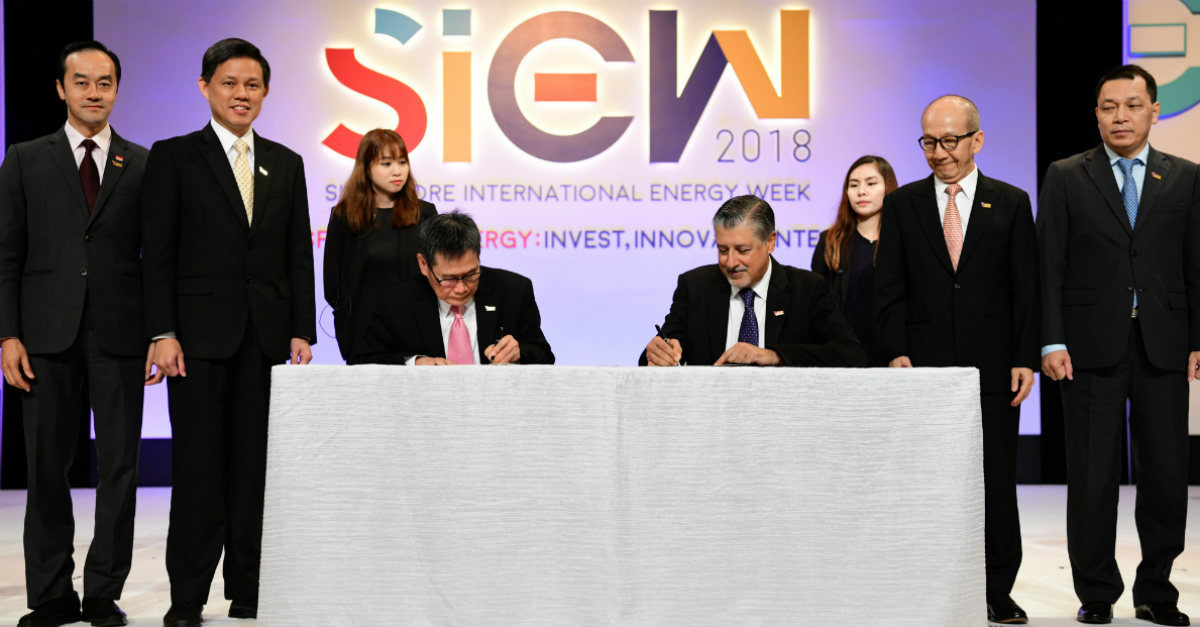On the margins of Singapore International Energy Week – which opened yesterday and runs until Friday – energy ministers from the Association of South East Asian Nations (ASEAN) discussed the region's renewable energy goals.
At the event, the International Renewable Energy Agency (IRENA) committed to help the region generate 23% of its power from clean energy by 2025. In its Renewable Energy Outlook 2016 for ASEAN report, IRENA found such a target feasible; however, a tenfold increase on 2016's investment in the sector would be necessary. IRENA concludes, as a result, $27 billion per year would be needed to stay on track for the renewables target.
“Southeast Asia is a dynamic and rapidly evolving region with strong economic growth, rising incomes and growing populations, factors that will increase regional demand for power,” said Adnan Amin, Director-General of IRENA. “Renewables will be the key to addressing this growing demand and ensuring energy security, while powering the inclusive and sustainable economic development of the region.”
The agency highlighted the socio-economic benefits of hitting green energy goals, with the southeast-Asian renewable energy sector employing 600,000 people and with that figure projected to expand to more than two million jobs by 2030.
Agency sketches out its offer of help
IRENA says ASEAN officials are recognizing its role in closing the deployment gap for renewables and it will help nations in various focus areas.
IRENA will help with the integration of an high share of renewables and provide assessments and roadmaps for accelerated renewable energy deployment, including updates to the ASEAN Renewable Energy Outlook.
The agency says it will promote knowledge sharing among policymakers to aid renewable energy policy and regulatory frameworks, and will support various renewable energy resources across ASEAN member states through technology and innovation assessments and cost reduction potential analysis.
Popular content
IRENA also intends to enable bankable renewable energy projects and support for project facilitation through its project facilitation platforms, and says it will help build the capacity of policymakers, regulators, utilities and other stakeholders through training and workshops.
Southeast Asia's huge PV potential
“This agreement represents an extension of the close relationship between ASEAN and IRENA, allowing our member states to not only learn from one another, but benefit from global best practice in the implementation of sound and successful renewable energy policies,” said ASEAN Secretary-General, and Bruneian government official, Dato Lim Jock Hoi. “This will help ASEAN member states transition to low carbon growth, and contribute to the attainment of sustainable development.”
IRENA’s report on renewable energy among the ten ASEAN nation states, identifies solar as a prime source of renewable energy, and forecasts growth from the current 2 GW of capacity to 60 GW.
Wood Mackenzie Power and Renewables recently published analysis predicting similar potential for the southeast Asian market. “The key trend we are seeing is the phase out of subsidies and transition towards auctions, which is leading to a lumpy demand in the region,” said Wood Mackenzie Solar Analyst Rishab Shrestha. “That being said, Asia-Pacific will still add 355 GW of new solar capacity over the next five years, and this is partly attributable to the reduction in PV capital cost globally.”
In that vein, analysts estimate, by 2023 the levelized cost of electricity (LCOE) will fall by 25%, to around $55/MWh. That is expected to prompt greater competition between solar and fossil fuel-based electricity, driving demand in Asia’s emerging markets, with Taiwan and Vietnam – as well as other markets with generous FIT regimes – seeing an uptick in solar installations. Nations with renewable portfolio standards, such as South Korea and the Philippines, are also likely to benefit.
This content is protected by copyright and may not be reused. If you want to cooperate with us and would like to reuse some of our content, please contact: editors@pv-magazine.com.



By submitting this form you agree to pv magazine using your data for the purposes of publishing your comment.
Your personal data will only be disclosed or otherwise transmitted to third parties for the purposes of spam filtering or if this is necessary for technical maintenance of the website. Any other transfer to third parties will not take place unless this is justified on the basis of applicable data protection regulations or if pv magazine is legally obliged to do so.
You may revoke this consent at any time with effect for the future, in which case your personal data will be deleted immediately. Otherwise, your data will be deleted if pv magazine has processed your request or the purpose of data storage is fulfilled.
Further information on data privacy can be found in our Data Protection Policy.